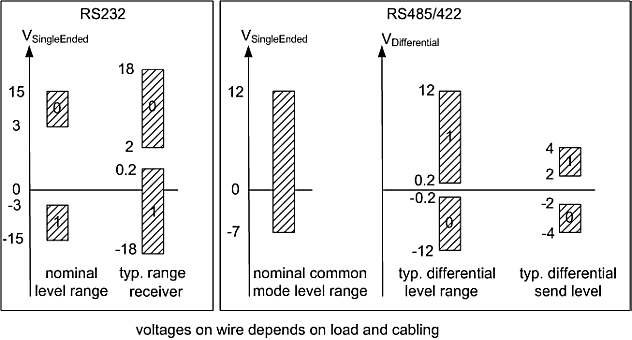Technology

Data transfer rate
The process image contains 22 bytes of user data. It is possible to transmit or receive these 22 bytes every second PLC cycle at the most:
- The data is transferred from the box to the controller in the first PLC cycle.
- In the second PLC cycle, the controller must acknowledge that it has accepted the data.
Therefore, if the cycle time is 10 ms, 50 times 22 bytes can be transmitted per second.
If the data format is set to 8N1, each transmitted byte is made up of a start bit, eight data bits and a stop bit. This is equivalent to 10 bits per byte of user data.
With the above-mentioned settings, a continuous data transfer rate of:
- 50[1/s] x 22[bytes] x 10[bits] = 11000 baud (bit/s)
can be achieved.
The next lower standard data transfer rate is 9600 baud. Accordingly, continuous transfer at a maximum baud rate of 9600 can be secured with a cycle time of 10 ms.
If only low quantities of data are transmitted or received sporadically (e.g. barcode scanner), the data transfer rate can also be set higher, or the cycle time can be enlarged.
If the controller cannot fetch the data quickly enough from the box, they are buffered in the box's receive buffer. All further data are lost if the receive buffer is full.
A buffer is also available for the send data. With a baud rate of 300 and a data format of 8N1, the box can only transmit 30 bytes per second. However, if more than 30 byte come in per second, the send buffer is written to first in this case also. Once this is full, all further data will be lost.